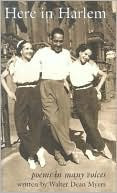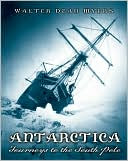
Noyes, Deborah ed. 2004. GOTHIC! TEN ORIGINAL DARK TALES. Cambridge. MA: Candlewick Press. ISBN 0763622435 [Suggested Grade Levels 7-12]
REVIEW
Ten well-known young adult authors unite their creative talents to compile unique stories of gothic fiction tailored to teen readers. The strength of this compilation revolves around its broad interpretation of the gothic genre and the variety stories that the authors are able to concoct within this parameter. Vivian Vande Velde, M.T. Anderson and Gregory Maguire offer tales most like contemporary horror stories while Joan Aiken and Celia Rees write tales with a more classic feel. Barry Yourgrau’s and Neil Gaiman’s offerings are humorous and Garth Nix, Janni Lee Simer, and Caitlin Kiernan all incorporate a strong dose of fantasy into the mix. Each tale has a distinctly original feel while the common gothic theme runs throughout to make the work a cohesive whole.
An “About the Authors” section follows the stories and allows the reader a glimpse into not only the lives of the authors, but also their inspiration for the tales shared in this book. With stories ranging from adolescent vampires and werewolves to haunted house horrors, Noyes has assembled a collection that has something for every gothic fan.
CONNECTIONS
Split the young adults into groups and give each group a story. Allow them enough time to rehearse and then ask each group to present their story to everyone -- they may choose to act it out, or simply read it aloud.
After sharing the stories in the collection, ask the young adults to try writing their own gothic stories. Be sure to have shared a variety of the stories, if not the whole book, so that they are aware that their stories can be contemporary or classic, humorous or frightening, realistic or fantastic. When finished, the stories can be combined to create a new book of gothic tales. Also, allow volunteers to share their stories if they wish.
RELATED BOOKS
Other horror story anthologies:
Kulpa, Kathryn. WHITE KNUCKLES: THRILLERS AND OTHER STORIES. ISBN 1886427011
Pepper, Dennis. THE OXFORD BOOK OF SCARY TALES. ISBN 0192781103
Pines, Tonya. THIRTEEN. ISBN 0590452568
By Erin Miklauz








